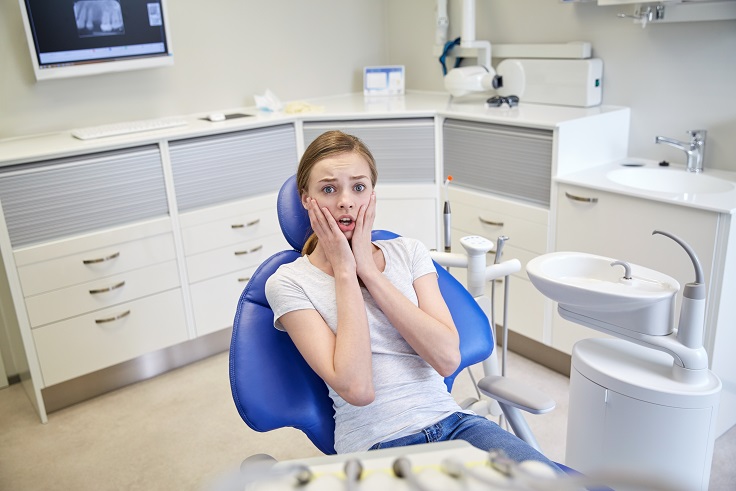
Fear of the dentist is far more than just a cliché. It is a very real problem that prevents many people from getting the dental care they need. As a result, many people end up suffering from poor oral hygiene and sometimes even have issues with their overall health and wellbeing. This is because inadequate dental hygiene has been shown to be a common denominator in people who are diagnosed with serious, chronic health problems including diabetes, heart disease, liver disease, stroke, and even cancer.
It is estimated that more than 50% of adults in the U.S have some degree of anxiety or fear about visiting the dentist and one-third of the U.S. population actively avoids visiting their dentist because they are frightened. There are many different elements of dentistry which can be potential triggers for dental anxiety or phobia, including:
Fear of pain
Not knowing what to expect
Concerns about the sounds and smells associated with dental appointments
Worry about sitting still or holding their mouth open for a long period of time
Fear that they won’t be able to swallow
Anxiety over injections
Concerns over the cost of their dental treatment
Fortunately, there are a number of things that can be done to help manage dental anxiety and make it possible for even the most fearful patient to get the care and treatment that they need.
Sedation dentistry
Sedation dentistry is one of the most effective ways of helping patients to overcome dental fear and anxiety. It is also more widely available than ever before thanks to the commitment dentists have in supporting their patient’s oral health. Sedation dentistry refers to the use of medications in order to induce a state of calm relaxation that begins before treatment and continues for the duration of the appointment.
There are several types of sedation available depending on the extent of your fear and the type of appointment needed. You will always be offered the most minimal sedation that you need to negate any risks associated with the medications. Sedation can be provided via gas that is breathed in during the procedure (nitrous oxide), oral medication, or intravenously. The effects of each vary, with intravenous sedation offering the deepest form of relief. With intravenous sedation, patients are generally barely able to remain conscious and typically have no memory of their procedure. Meanwhile, nitrous oxide gas sedation only induces slight relaxation and calmness and the effects only last as long as you are inhaling the gas.
The various types of sedation will be explained to you by your dentist when you are discussing which type may be right for you.
Enhanced consultation
If your fear of the dentist stems from the unknown and not knowing what to expect from your appointment, you can alleviate many of your concerns by having an enhanced consultation with your dentist. This is an opportunity for you to discuss every aspect of the appointment and ask any questions that you have. Feeling fully informed is a very valuable and powerful tool for anyone facing any sort of dental procedure that shouldn’t be underestimated.
Take breaks
Most patients are unaware that it is entirely acceptable for them to take short breaks during a dental treatment. Although you may not be able to speak, if you aren’t under heavy sedation you should have enough awareness to be able to raise your hand which will indicate to your dentist that you need to take a few moments. This could be to swallow, to ease any discomfort, or simply for you to take a deep breath. If you are fearful about a procedure, make sure that you agree on a signal so that you can take a break if needed during the appointment.
If fear or anxiety is preventing you from seeking the dental care that you need, speak to our dentistry team today to find out how we can help.







